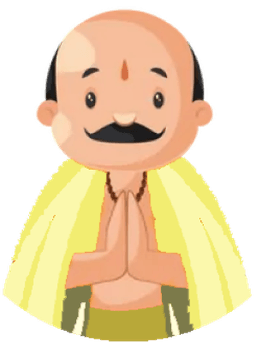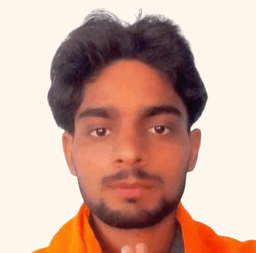Chhath Puja 2024 : Date, Celebration and Significance

About Chhath Puja
Chhath, a festival that falls on the sixth day of kartik month, will be observed on November 7, 2024 Thursday this year. Chhath Puja is majorly celebrated as a folk festival by the Bihar community of India. Some people of Jharkhand and Uttar Pradesh also celebrated Chhath Puja. According to Hindu tradition, chhath puja is devoted to Hindu God, Lord Sun and his wife Goddess Usha. On this auspicious day, devotees worship Goddess Chhatti also known as Chhathi Maiyya or Chhathi Mata. Chhath festival starts from sunrise on Day one and continues for four days till sunset. Chhath Puja is observed in order to attain wealth, prosperity and healthy life from the Lord Sun and Goddess chhathi. We will study about chhath puja in detail below and will find the answers of questions like what is the significance of Chhath Puja? Why and how is it celebrated? But before that let’s check out when Chhath Puja will be celebrated in the year 2024.
Chhath, a festival that falls on the sixth day of kartik month, will be observed on November 7, 2024 Thursday this year. Chhath Puja is majorly celebrated as a folk festival by the Bihar community of India. Some people of Jharkhand and Uttar Pradesh also celebrated Chhath Puja. According to Hindu tradition, chhath puja is devoted to Hindu God, Lord Sun and his wife Goddess Usha. On this auspicious day, devotees worship Goddess Chhatti also known as Chhathi Maiyya or Chhathi Mata. Chhath festival starts from sunrise on Day one and continues for four days till sunset. Chhath Puja is observed in order to attain wealth, prosperity and healthy life from the Lord Sun and Goddess chhathi. We will study about chhath puja in detail below and will find the answers of questions like what is the significance of Chhath Puja? Why and how is it celebrated? But before that let’s check out when Chhath Puja will be celebrated in the year 2024.
Chhath Puja 2024 Date and Puja Timings
In 2024, Chhath Puja will be observed on November 7, 2024 Thursday. Shashthi Tithi will begin on November 7, 2024 Thursday at 12.41 am and will end at 12.34 am on the same day. The four day festival timings for sunrise and sunset are mentioned below: Day 1 - Nahay - Khay, 5th November 2024, Tuesday (Chaturthi). Sunrise - 06.36 am; Sunset - 05.33 pm. Day 2 - Lohanda and Kharna, 6th November 2024, Wednesday (Panchami). Sunrise - 06.37 am; Sunset - 05.32 pm. Day 3 - Chhath Puja and Sandhya Arghya, 7th November 2024, Thursday (Shashthi). Sunrise - 06.38 am; Sunset - 05.32 pm. Day 4 - Usha Arghya, Parana Day, 8th November 2024, Friday (Saptami). Sunrise - 06.38 am; Sunset - 05.31 pm.
In 2024, Chhath Puja will be observed on November 7, 2024 Thursday. Shashthi Tithi will begin on November 7, 2024 Thursday at 12.41 am and will end at 12.34 am on the same day. The four day festival timings for sunrise and sunset are mentioned below: Day 1 - Nahay - Khay, 5th November 2024, Tuesday (Chaturthi). Sunrise - 06.36 am; Sunset - 05.33 pm. Day 2 - Lohanda and Kharna, 6th November 2024, Wednesday (Panchami). Sunrise - 06.37 am; Sunset - 05.32 pm. Day 3 - Chhath Puja and Sandhya Arghya, 7th November 2024, Thursday (Shashthi). Sunrise - 06.38 am; Sunset - 05.32 pm. Day 4 - Usha Arghya, Parana Day, 8th November 2024, Friday (Saptami). Sunrise - 06.38 am; Sunset - 05.31 pm.
Significance and History of Chhath Puja
Chhath puja is a festival celebrated in many parts of India, majorly in Bihar. During this festival, devotees observe a fast for about 36 hours. People worship Lord Sun and his wife Goddess Usha with a belief that the goddess will bless them with long life, sustainability in life, wealth, prosperity and happy married life. Devotees consume only veg meals during the festival. Devotees believed that life on earth would not be possible without nature including Sun and Water and for that people should thank nature for their well-being. According to Hindu Shastras and Puranas, Chhath Puja came into existence during Ramayana, when Lord Rama and Goddess Sita returned from 14 years of exile after defeating demon Ravana, they observed this fast for the first time. Another significance is related to Mahabharat times, it is believed that Chhath came into existence when Karna, the son of God Sun used to offer jal to his father everyday while standing in water. Another belief related to Chhath Puja is that during Mahabharat, Pandavas won back their Kingdom because their wife Draupadi used to worship Lord Sun everyday.
Chhath puja is a festival celebrated in many parts of India, majorly in Bihar. During this festival, devotees observe a fast for about 36 hours. People worship Lord Sun and his wife Goddess Usha with a belief that the goddess will bless them with long life, sustainability in life, wealth, prosperity and happy married life. Devotees consume only veg meals during the festival. Devotees believed that life on earth would not be possible without nature including Sun and Water and for that people should thank nature for their well-being. According to Hindu Shastras and Puranas, Chhath Puja came into existence during Ramayana, when Lord Rama and Goddess Sita returned from 14 years of exile after defeating demon Ravana, they observed this fast for the first time. Another significance is related to Mahabharat times, it is believed that Chhath came into existence when Karna, the son of God Sun used to offer jal to his father everyday while standing in water. Another belief related to Chhath Puja is that during Mahabharat, Pandavas won back their Kingdom because their wife Draupadi used to worship Lord Sun everyday.
Story of Chhath Puja
Since King Priyavrat and Queen Malini were depressed over not having children, Maharishi Kashyap suggested that they follow the Putrakameshthi Yagya to conceive. Following the yagya, Maharshi offered Queen Malini a kheer as prasad and requested her to consume it. Few months later, the king and queen were blessed with a boy, but the kid passed away shortly after birth. Afterwards, when the King Priyavrat carried the corpse of his son to the crematorium and also tried to sacrifice his own life, there appeared Goddess Chhathi. The goddess promised to bless the monarch with a kid if he would not give his life and begin to worship her. After King begins to adore Goddess Chhathi fervently, Goddess Chhathi bestows a kid onto them. On the day when the king worshiped Goddess Chhathi, that was the shashthi tithi of kartik month. Since then, it is thought that people have continued to worship Goddess Chhathi on Shashti Tithi of Kartik Month annually.
Since King Priyavrat and Queen Malini were depressed over not having children, Maharishi Kashyap suggested that they follow the Putrakameshthi Yagya to conceive. Following the yagya, Maharshi offered Queen Malini a kheer as prasad and requested her to consume it. Few months later, the king and queen were blessed with a boy, but the kid passed away shortly after birth. Afterwards, when the King Priyavrat carried the corpse of his son to the crematorium and also tried to sacrifice his own life, there appeared Goddess Chhathi. The goddess promised to bless the monarch with a kid if he would not give his life and begin to worship her. After King begins to adore Goddess Chhathi fervently, Goddess Chhathi bestows a kid onto them. On the day when the king worshiped Goddess Chhathi, that was the shashthi tithi of kartik month. Since then, it is thought that people have continued to worship Goddess Chhathi on Shashti Tithi of Kartik Month annually.
Rituals and Traditions related to Chhath Puja
The first day of Chhath Puja is started by Nahay Khay. The devotees dips in the Ganga river on this day. The house is then cleaned, the Gangajal (Ganges water) is used to purify the surroundings, and the vegetarian dish "Kaddu-Bhat" made by people. On this day, women who observe Chhath only eat one meal. Kharna refers to the Vrat, or fast, observed throughout the day. Devotees follow a rigorous fast on the second day of the Chhath Puja celebration, they do not even consume water from sunrise till sunset. Devotees break their fast after honoring the Sun God in the evening. They sacrifice food to the Sun God. Devotees might indulge in Kheer, prepared with ghee and jaggery, fruits, puris, or chapatis, in the evening. The main ritual of the third day is to offer Arghya (milk and water) on the Kartik Shukla Shashti to the setting Sun. This fast lasts all night long, and the next day after sunrise is Parana. Women present Sandhya Arghya to the Sun God while dressed in saffron or turmeric yellow sarees. At night, Vrat Katha is performed and the songs of Goddess Shashti are sung. On this day, people decorate bamboo baskets and keep different food items in it like Laddu, Banana, Thekua, Rice and more. On the last day, one more time Arghya is presented to the Sun God during sunrise. During the last day of Chhath, devotees visit the river side and offer Usha Arghya to the rising sun in order to complete their fasts and receive blessings from Sun God and Goddess Chhathi. The Chhathi Maiya is worshiped by devotees for the sake of their children's safety as well as the joy and harmony of the whole household.
The first day of Chhath Puja is started by Nahay Khay. The devotees dips in the Ganga river on this day. The house is then cleaned, the Gangajal (Ganges water) is used to purify the surroundings, and the vegetarian dish "Kaddu-Bhat" made by people. On this day, women who observe Chhath only eat one meal. Kharna refers to the Vrat, or fast, observed throughout the day. Devotees follow a rigorous fast on the second day of the Chhath Puja celebration, they do not even consume water from sunrise till sunset. Devotees break their fast after honoring the Sun God in the evening. They sacrifice food to the Sun God. Devotees might indulge in Kheer, prepared with ghee and jaggery, fruits, puris, or chapatis, in the evening. The main ritual of the third day is to offer Arghya (milk and water) on the Kartik Shukla Shashti to the setting Sun. This fast lasts all night long, and the next day after sunrise is Parana. Women present Sandhya Arghya to the Sun God while dressed in saffron or turmeric yellow sarees. At night, Vrat Katha is performed and the songs of Goddess Shashti are sung. On this day, people decorate bamboo baskets and keep different food items in it like Laddu, Banana, Thekua, Rice and more. On the last day, one more time Arghya is presented to the Sun God during sunrise. During the last day of Chhath, devotees visit the river side and offer Usha Arghya to the rising sun in order to complete their fasts and receive blessings from Sun God and Goddess Chhathi. The Chhathi Maiya is worshiped by devotees for the sake of their children's safety as well as the joy and harmony of the whole household.
Disclaimer:
The above-provided information is based on various researches, facts may vary as per traditional customs and region. Kindly consult before performing the rituals.
The above-provided information is based on various researches, facts may vary as per traditional customs and region. Kindly consult before performing the rituals.
































































































